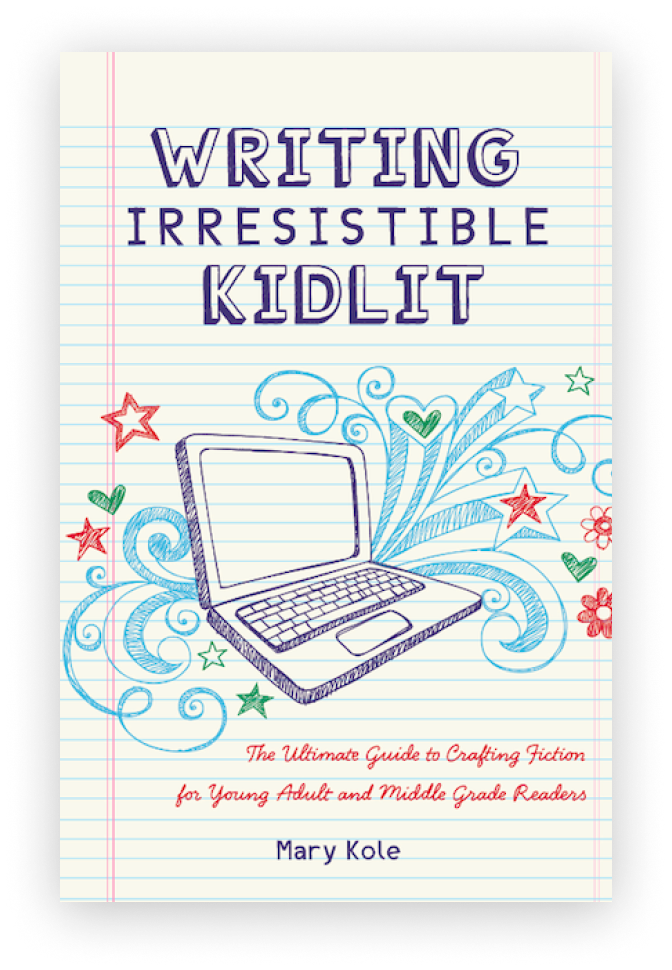Writing and Publishing
a Chapter Book
By Mary Kole
Mary Kole is a former literary agent, freelance editor, writing teacher, author of Writing Irresistible Kidlit, and IP developer for major publishers, with over a decade in the publishing industry.
Writing and publishing a children’s chapter book can be an exciting and rewarding endeavor. But first, you need to understand this very specific market to ensure that your project is well researched, thoughtfully written, and correctly edited before you submit your manuscript to literary agents and publishers (or self-publish). This article will provide you with a high-level overview of the process, from creating the most robust idea possible to writing and revising the project, and then pursuing potential publication. Additionally, we’ll dive into some very specific guidelines for writing in the very targeted chapter book market.
Developing Chapter Book Ideas and Researching Your Audience
Before beginning your chapter book story, you need to develop the strongest idea possible. Consider the elements that would make your story unique or interesting to readers. Make sure you research the market as well. Chapter books are fun to read and rewarding to write but they have very specific considerations. And the most important is your target audience for this category. They tend to be kids ages seven to nine, but that’s a broad guideline (as some younger kids are reading at the chapter book level, and some reluctant older readers can be found here as well).
Who are these core chapter book readers? What types of stories do they like? What themes are popular and relatable to them? Knowing this information could be incredibly helpful in developing characters and plot points that relate specifically to kids at this age and reading level. You might also consider writing a novel outline for your chapter book. These manuscripts are usually short—the average chapter book word count is between 5,000 and 10,000—but that doesn’t mean you can’t organize your ideas.
Writing and Editing Your Chapter Book
The next step is actually writing your story. When it comes to writing chapter books in particular, there are certain conventions that you need to consider. In addition to keeping your word count and chapter book age range in mind (see above), you’ll need to break your manuscript into … chapters! This consideration is right there in the name “chapter book.”
The reason for this is simple. A chapter book is often the first kind of novel that a kid reads by themselves, and those eager young readers really want the validation of finishing a chapter (or unit of story). You want to keep them reading, too, so chapter endings should include cliffhangers and story tension, or new information deployed strategically. Plots will often involve friendship and family situations and take place at home and school—familiar environments for these elementary-school-aged kids. Imagine what a seven-year-old cares about and throw in some zany or silly fun. Chapter book ideas tend to do really well in a series format, so think of ideas that could last for several books, at minimum.
Once your story is written, it is time for self-editing. This includes developmental editing first to make sure your structure, characterization (LINK: https://kidlit.com/characterization), and pacing are working effectively. Then you will want to do line editing, copy editing, and proofreading. You may also want to get a second set of eyes involved for writing notes, whether from a critique partner or writing workshop or freelance editor. It is important that you go through several rounds of revisions before submitting your work for potential publication. The chapter book market is very specific and competitive—with only a few slots per year per publisher for new work—so you want your project to be as strong as possible.
Publishing a Chapter Book
Once your book is as strong as it can possibly be, it’s time to start thinking about potential literary agents who may be interested in representing you, and publishers that have a strong chapter book presence. (If you’re wondering whether to hire an illustrator before you submit, publishers will commission spot illustrations after they offer a contract.) It’s important to note that few agents and publishers really specialize in the chapter book space, so your chances might be limited. That’s why writing and revising intentionally is a great idea—as is educating yourself in the quirks of the chapter book category.

Click here to purchase Writing Irresistible Kidlit, my book on fiction craft for MG and YA novels, out from Writer's Digest Books. This will show you my writing craft philosophy and give you lots of valuable advice, including tips for the novel revision process and self-editing. There are over 35 example novels cited and discussed throughout. It’s a valuable resource for any writer’s toolkit.
Click here to purchase Irresistible Query Letters, my book on query letters, including over forty examples with comprehensive notes on each one. There’s a ton of submission advice, best practices, and insider information in these pages, and you’ll really enjoy seeing what other writers are doing in the slush.




